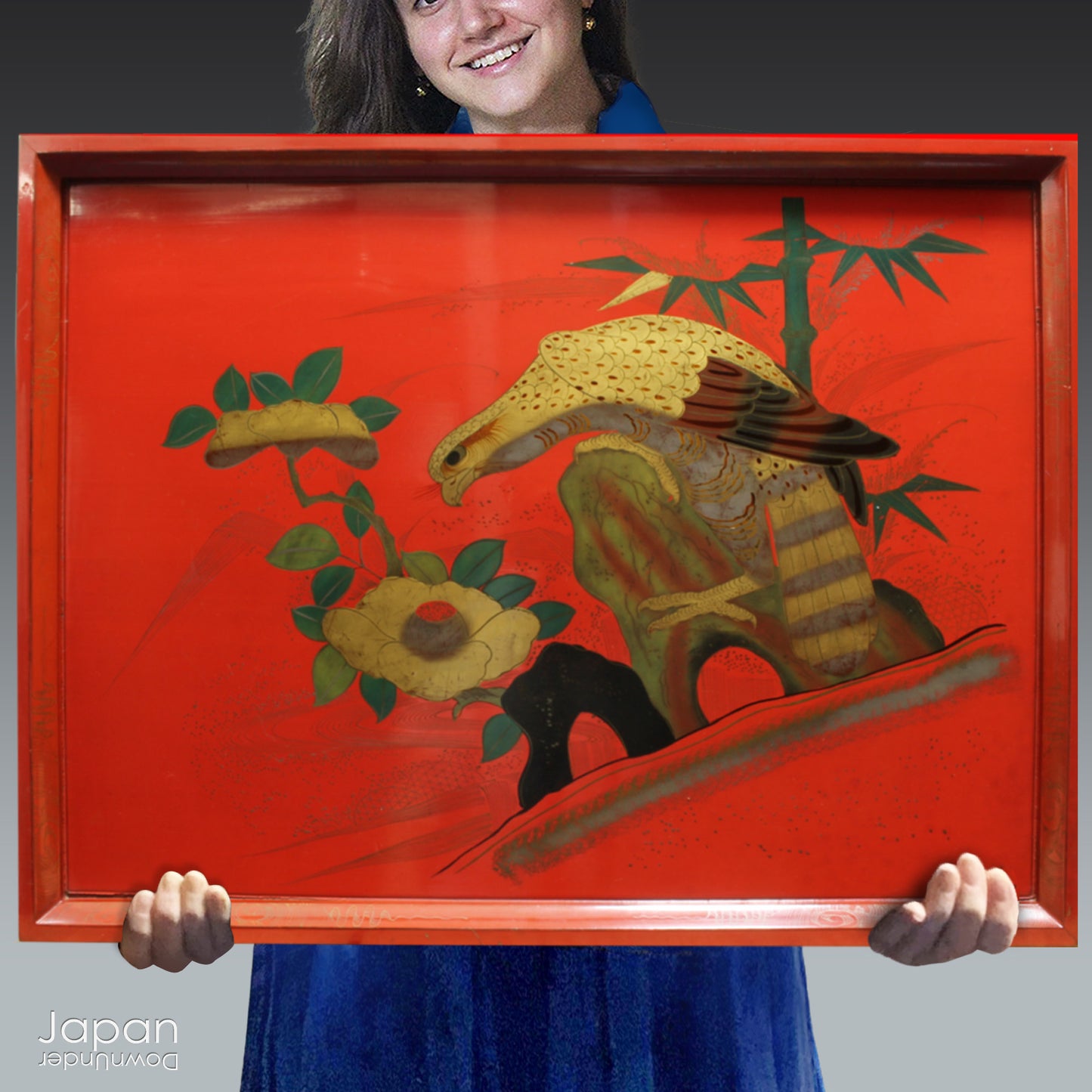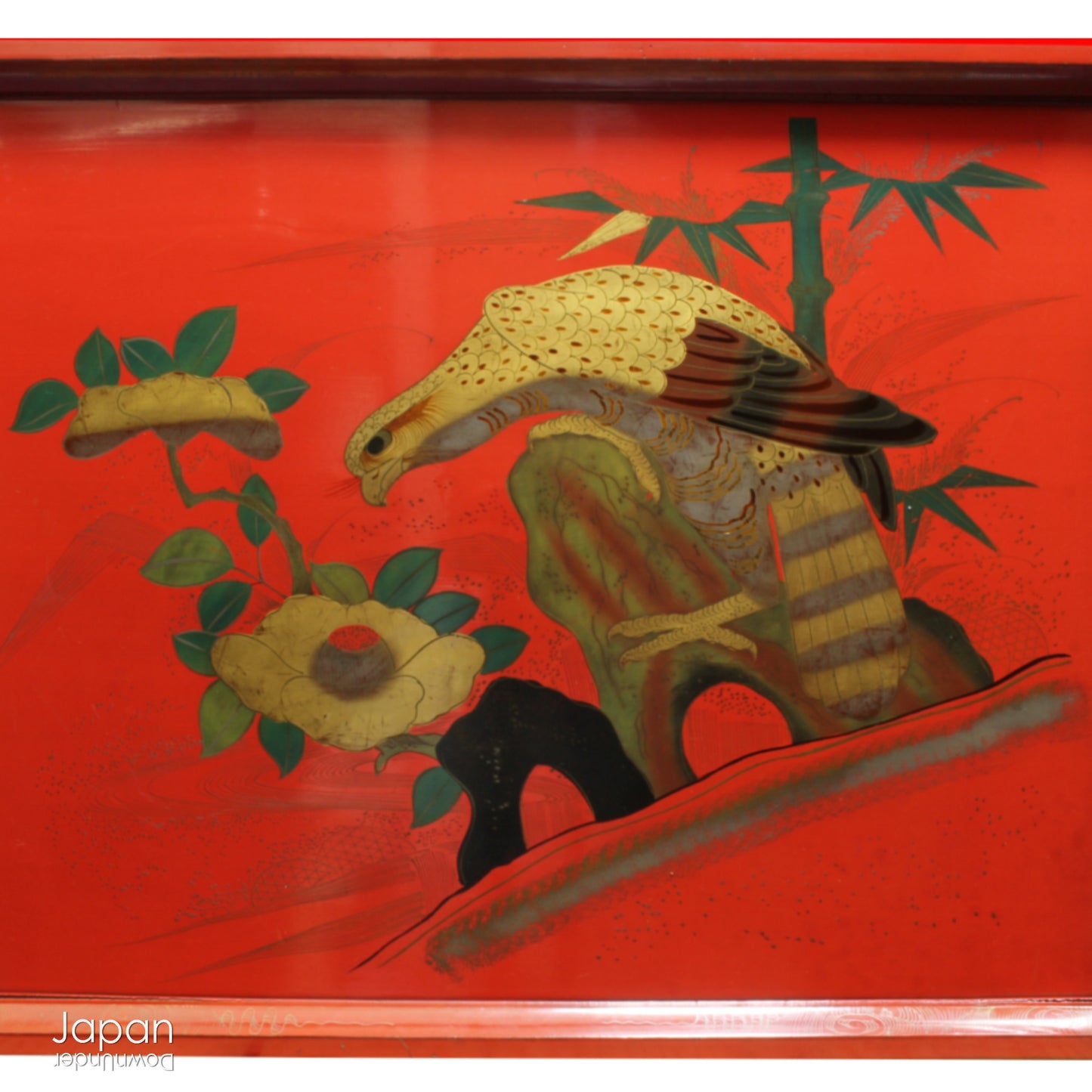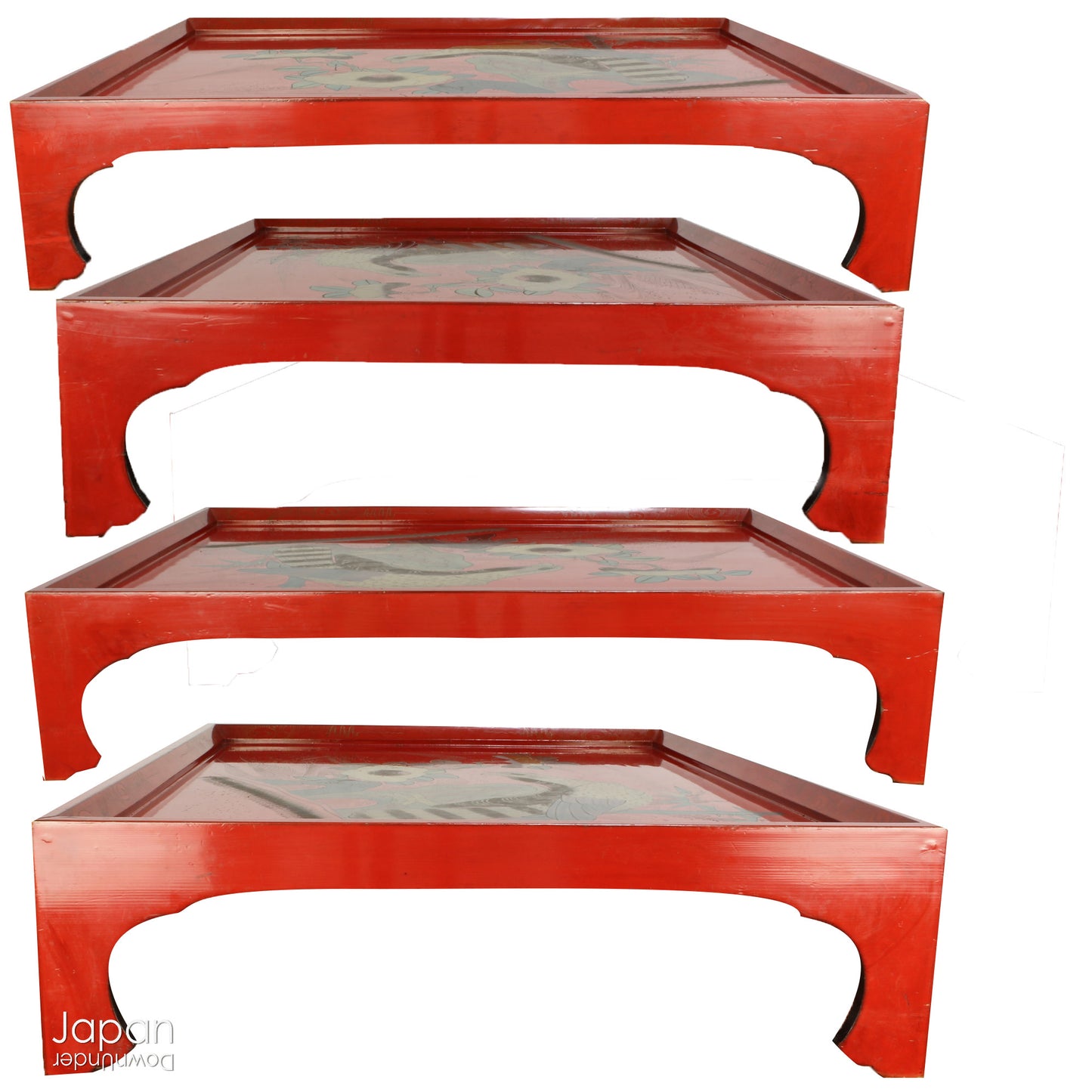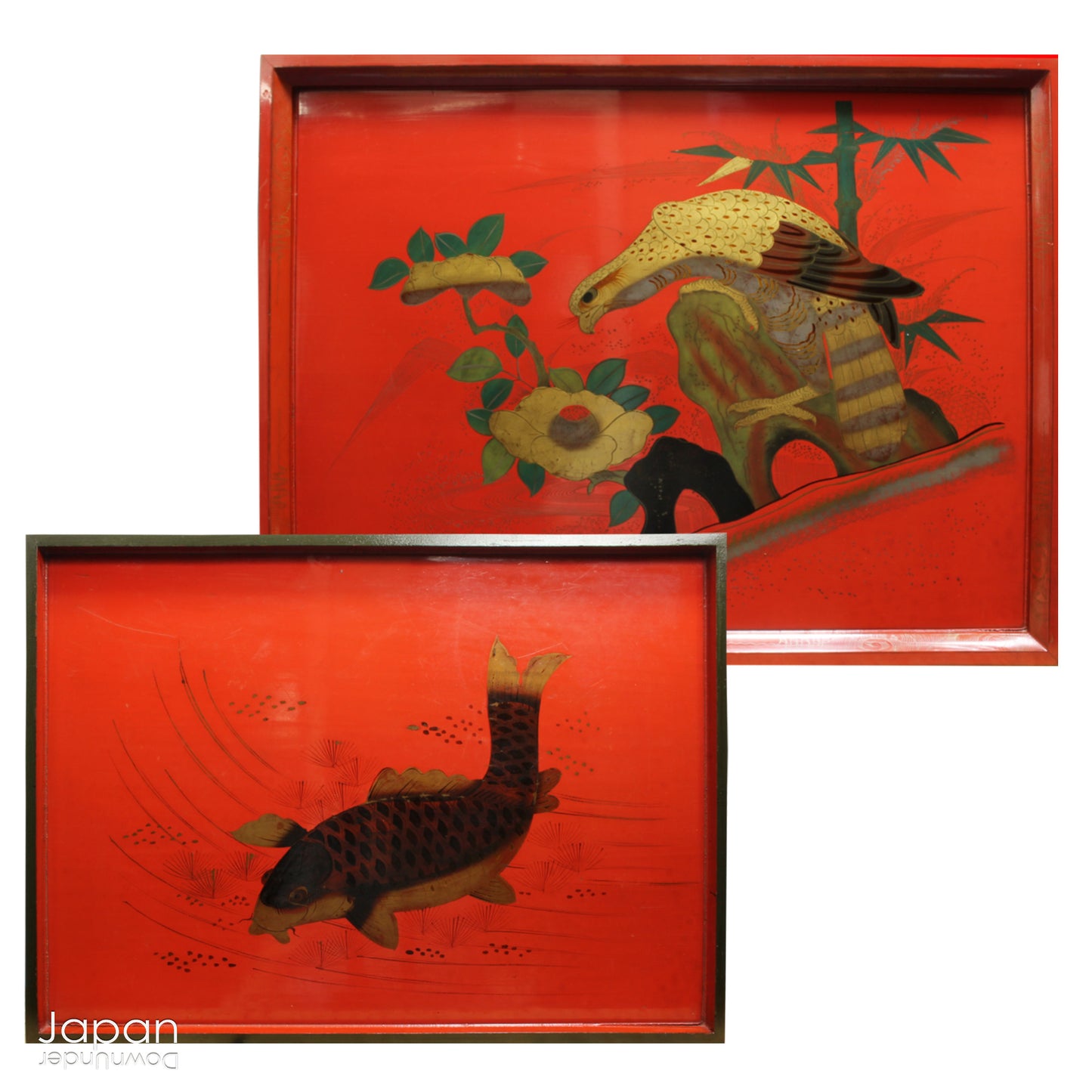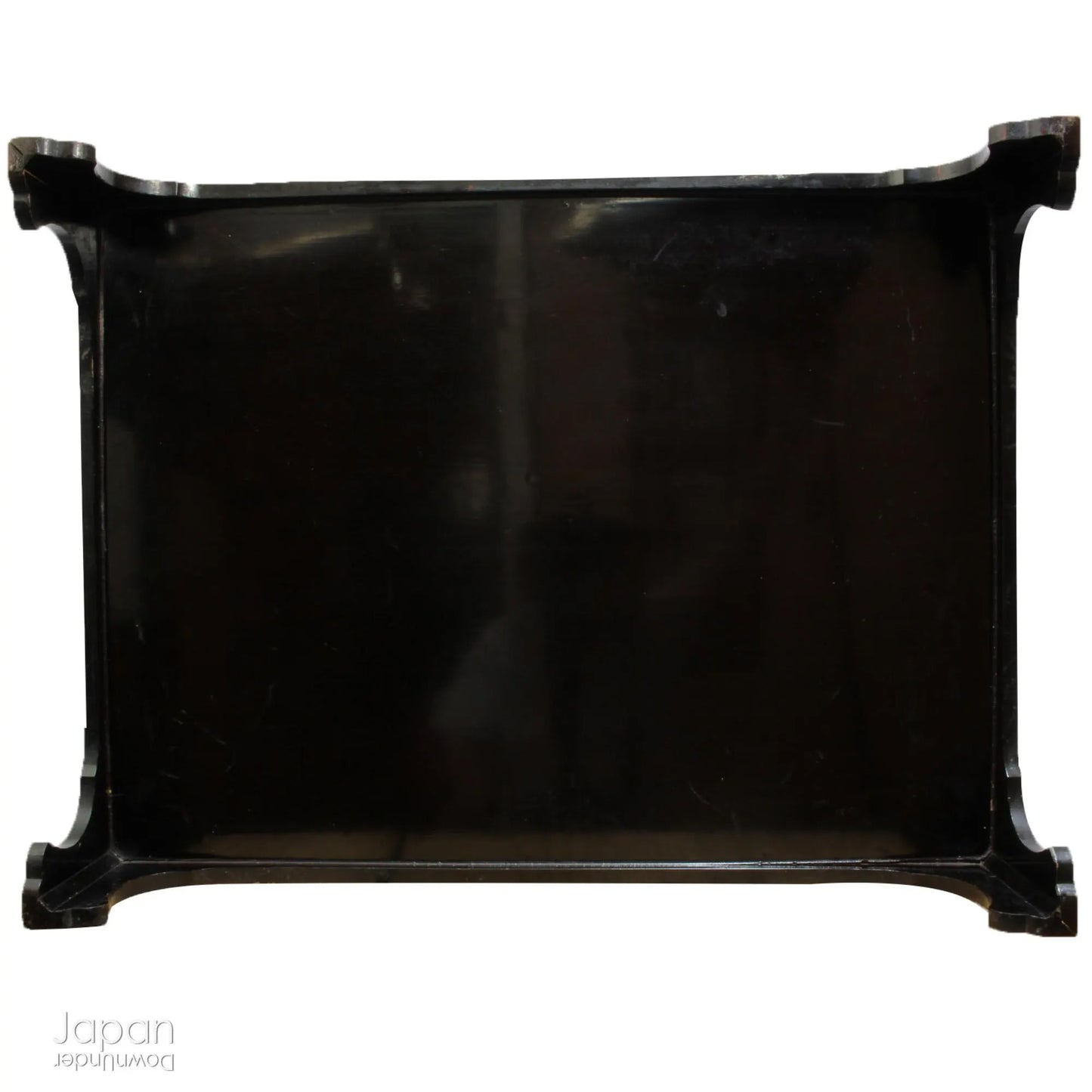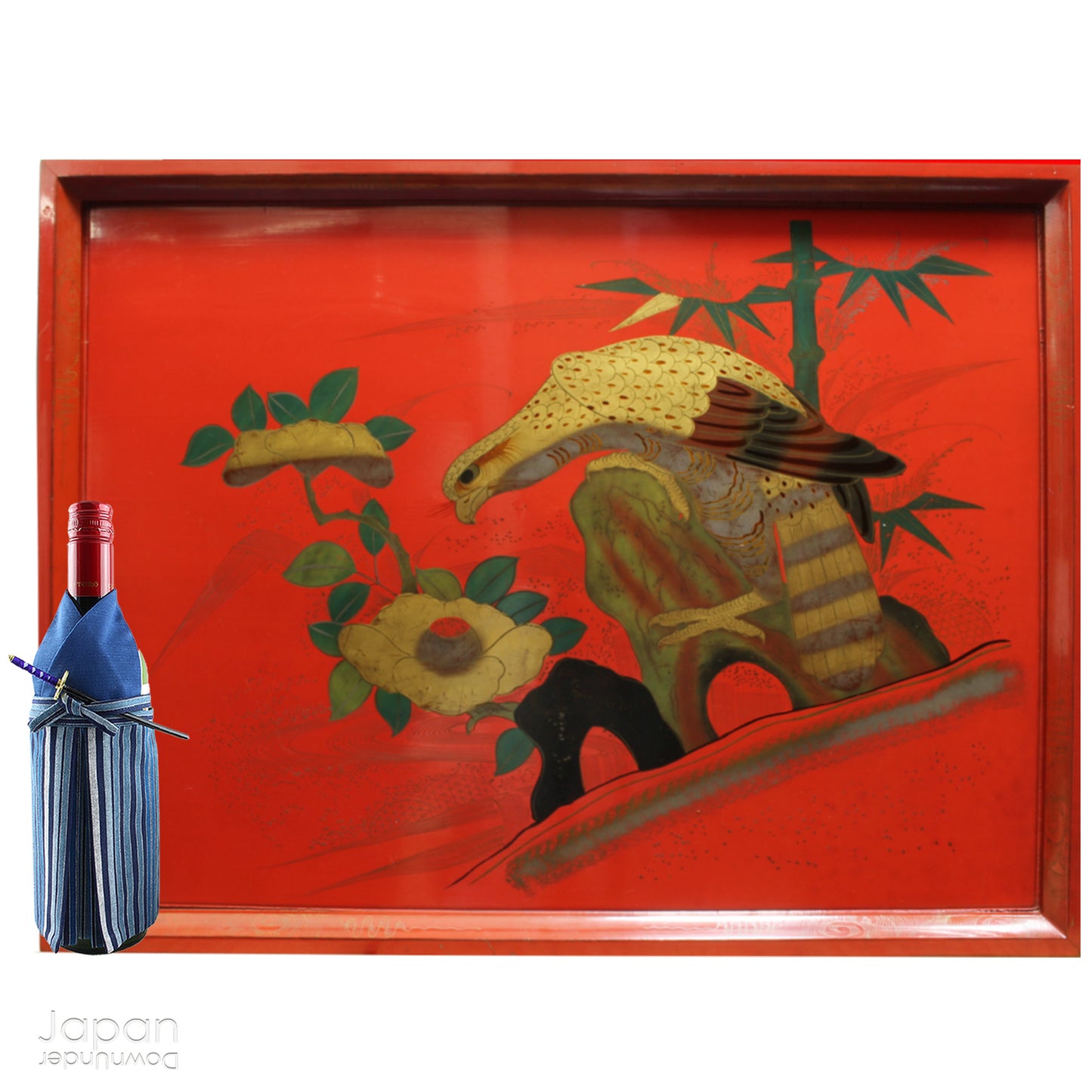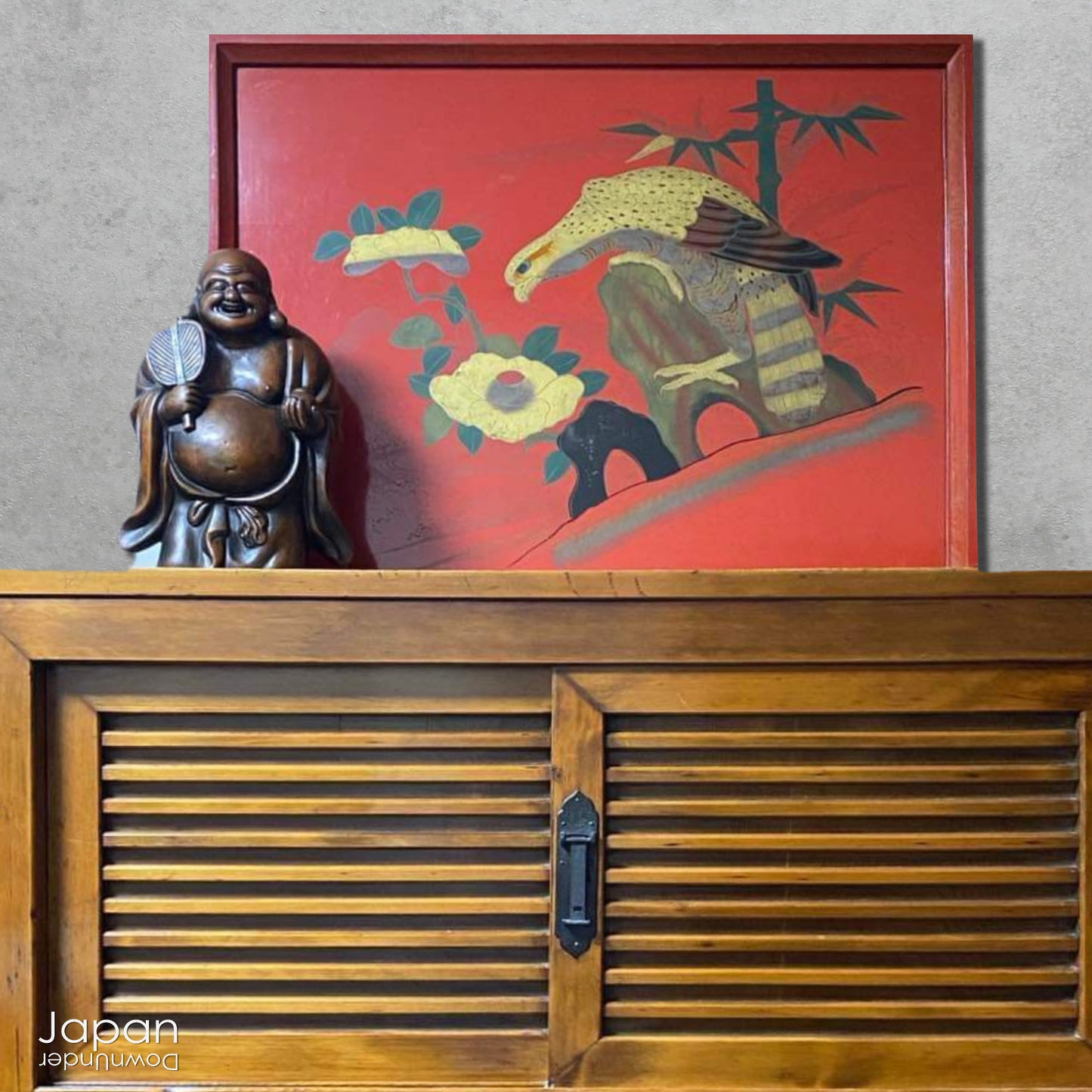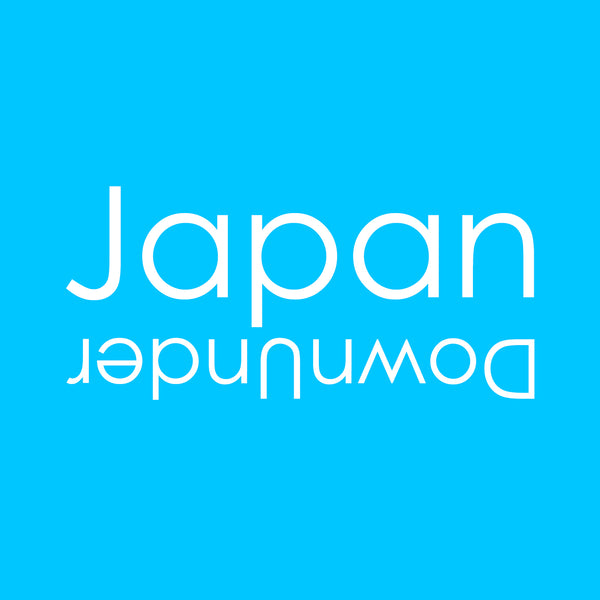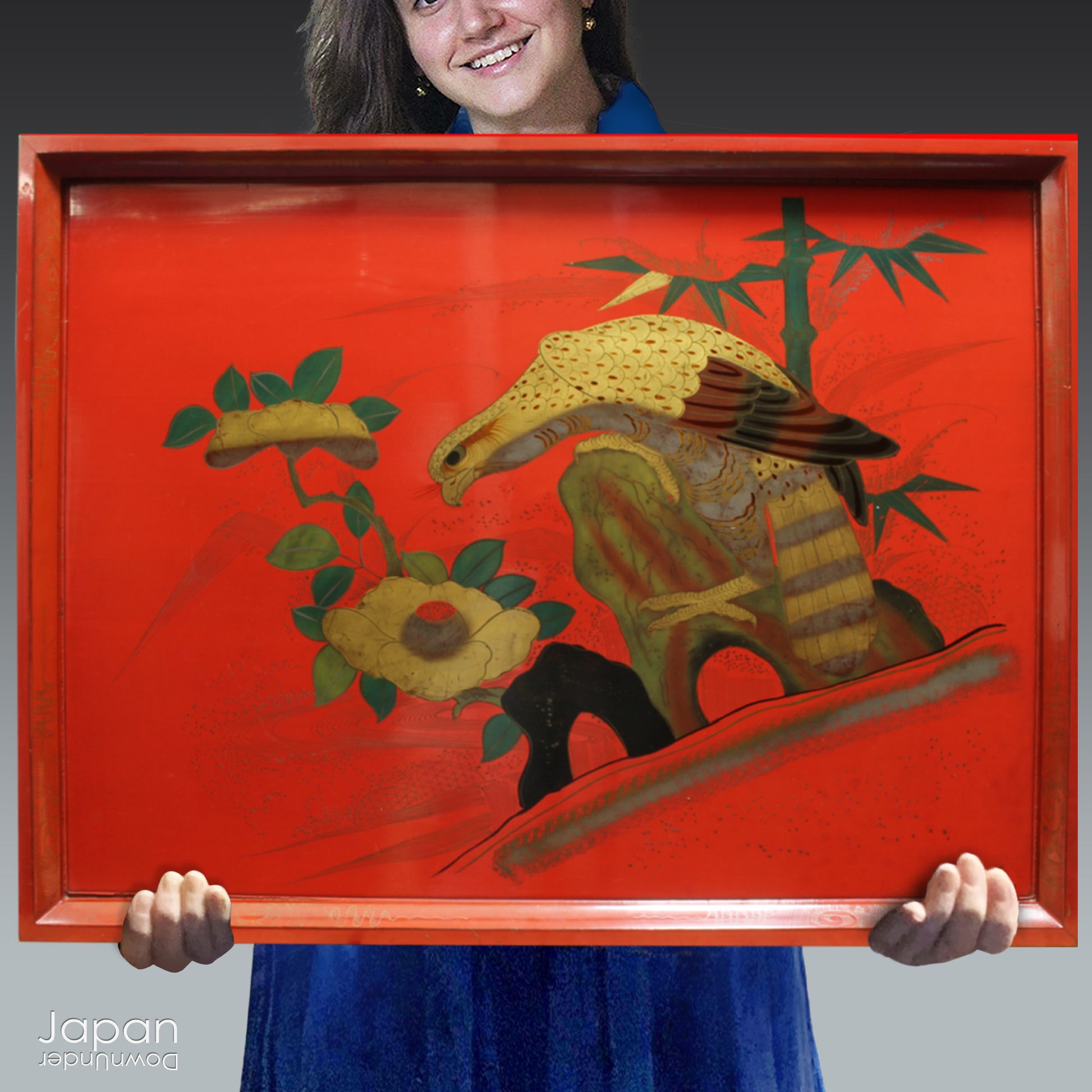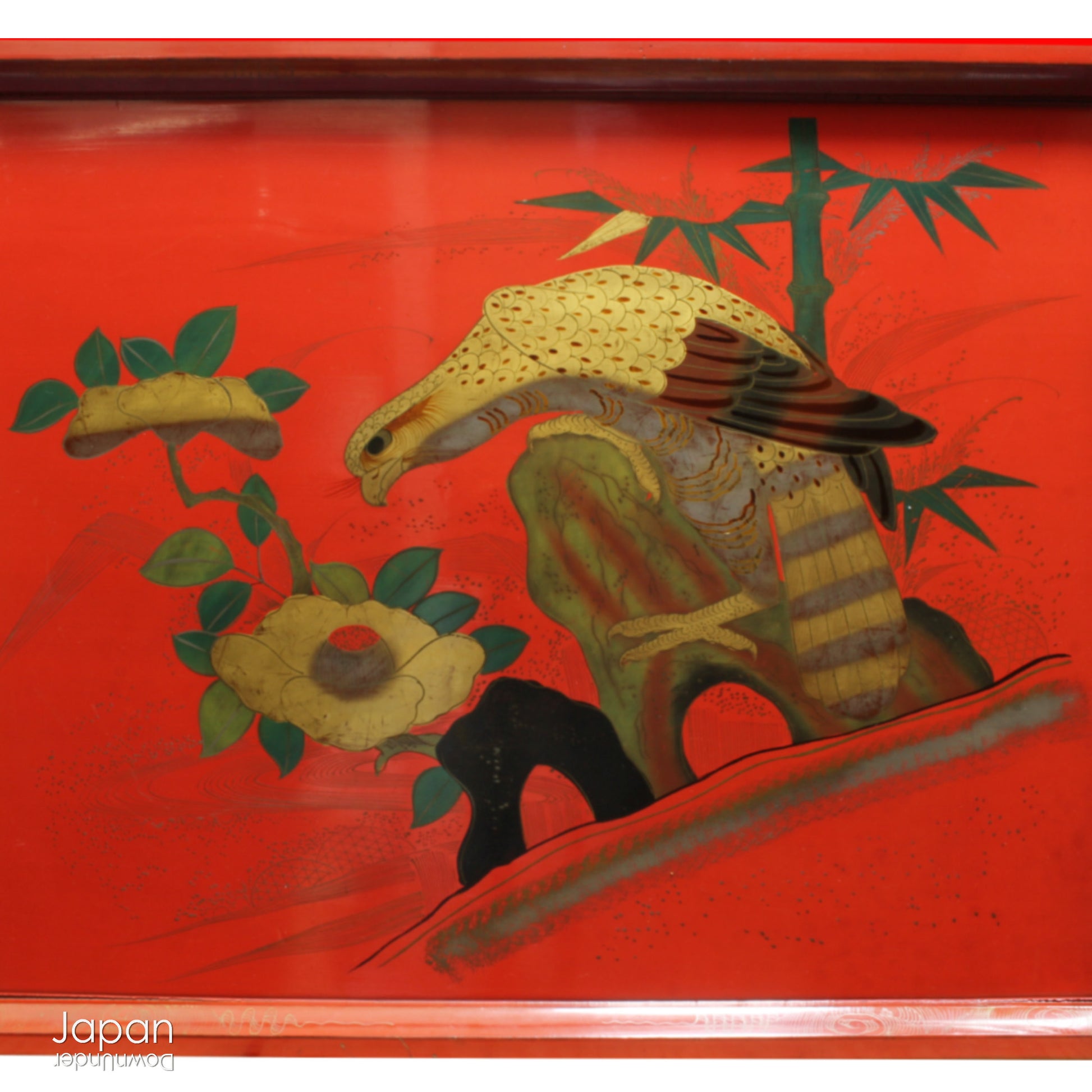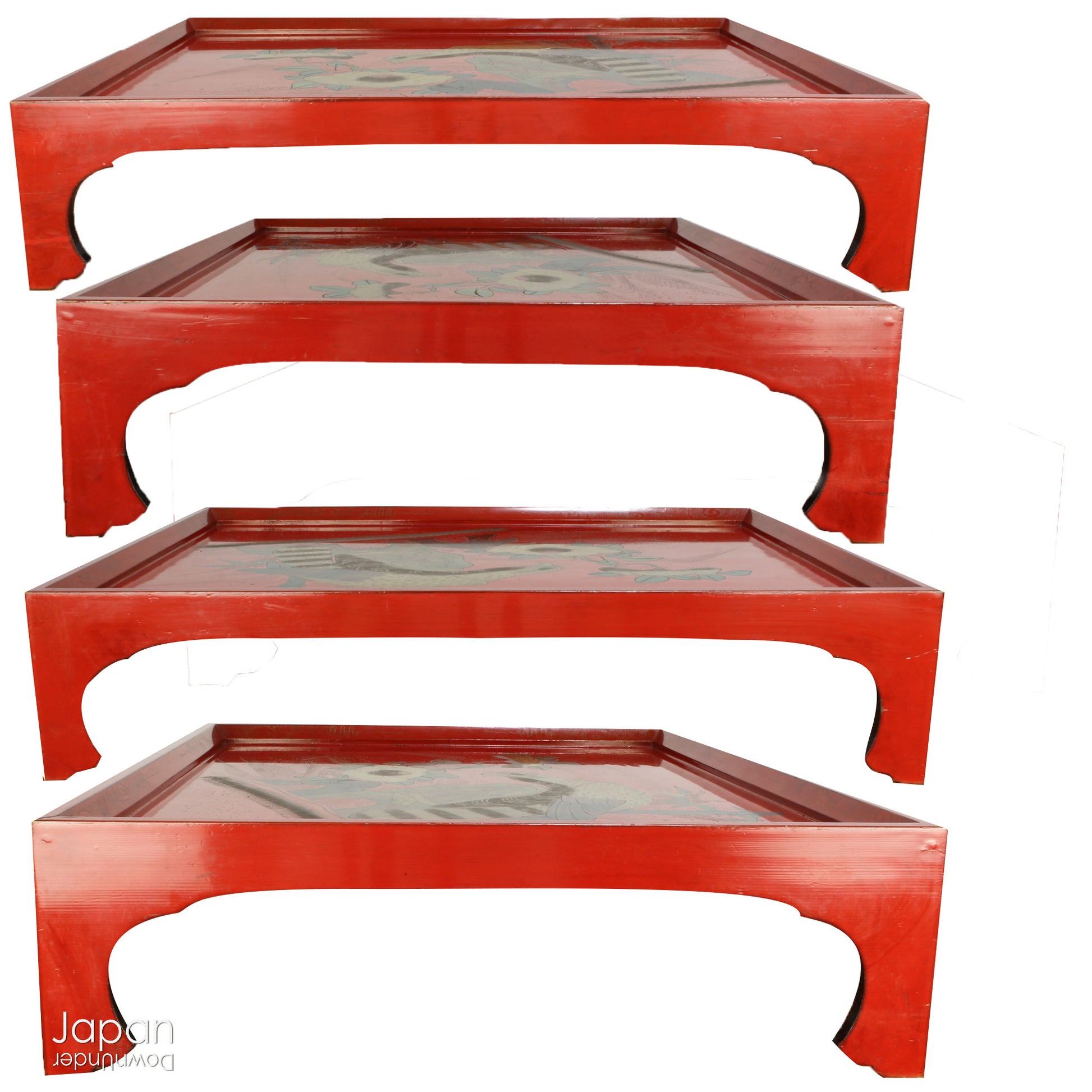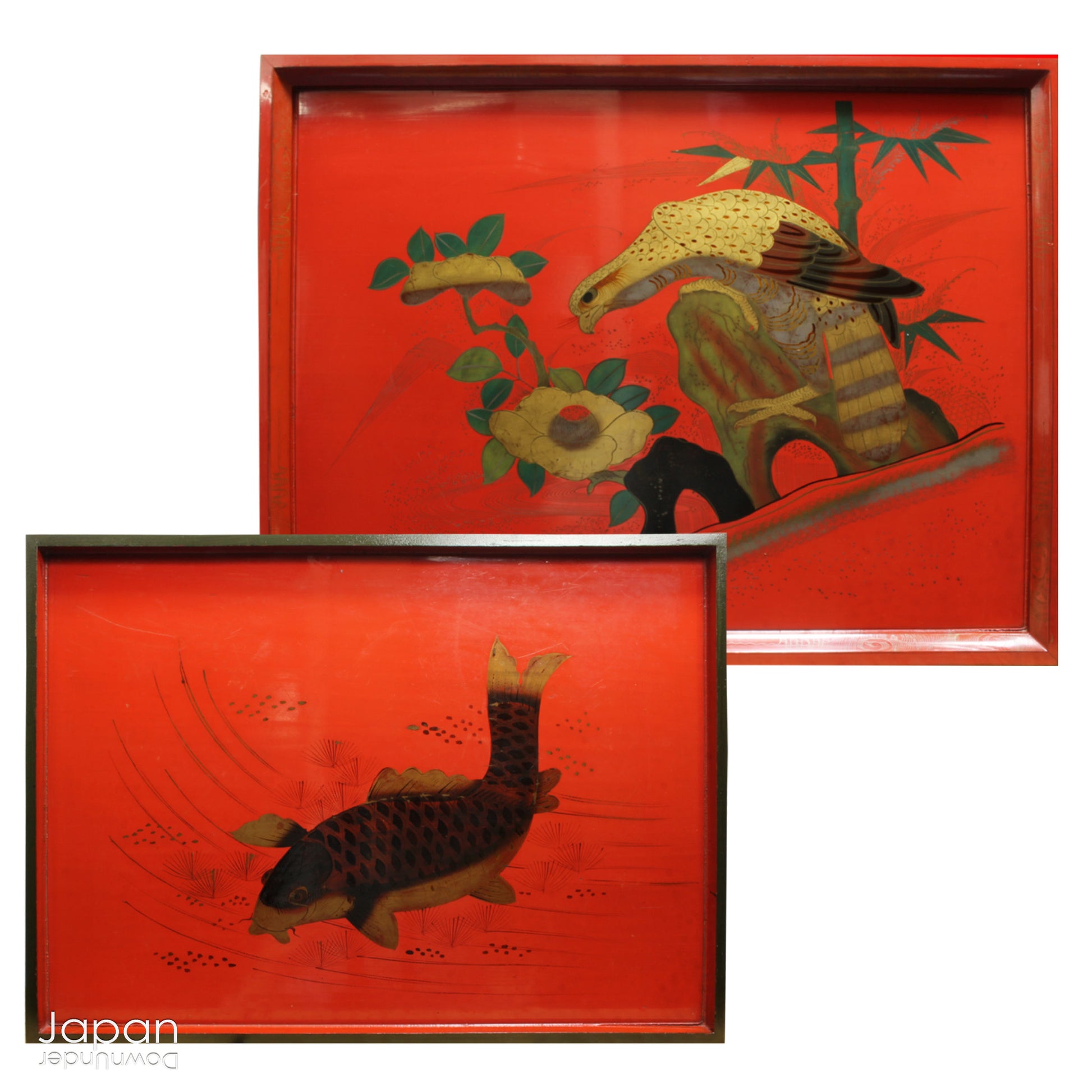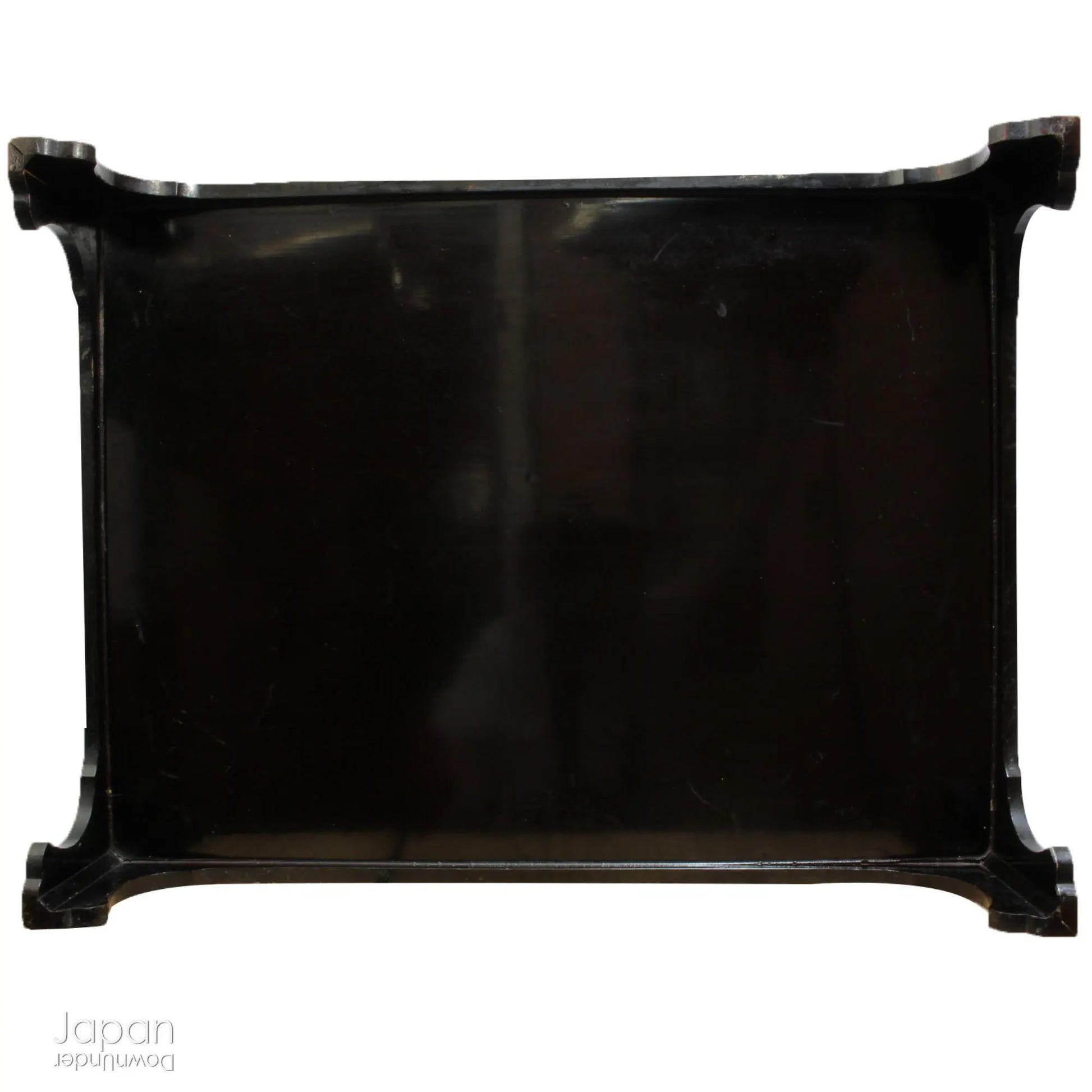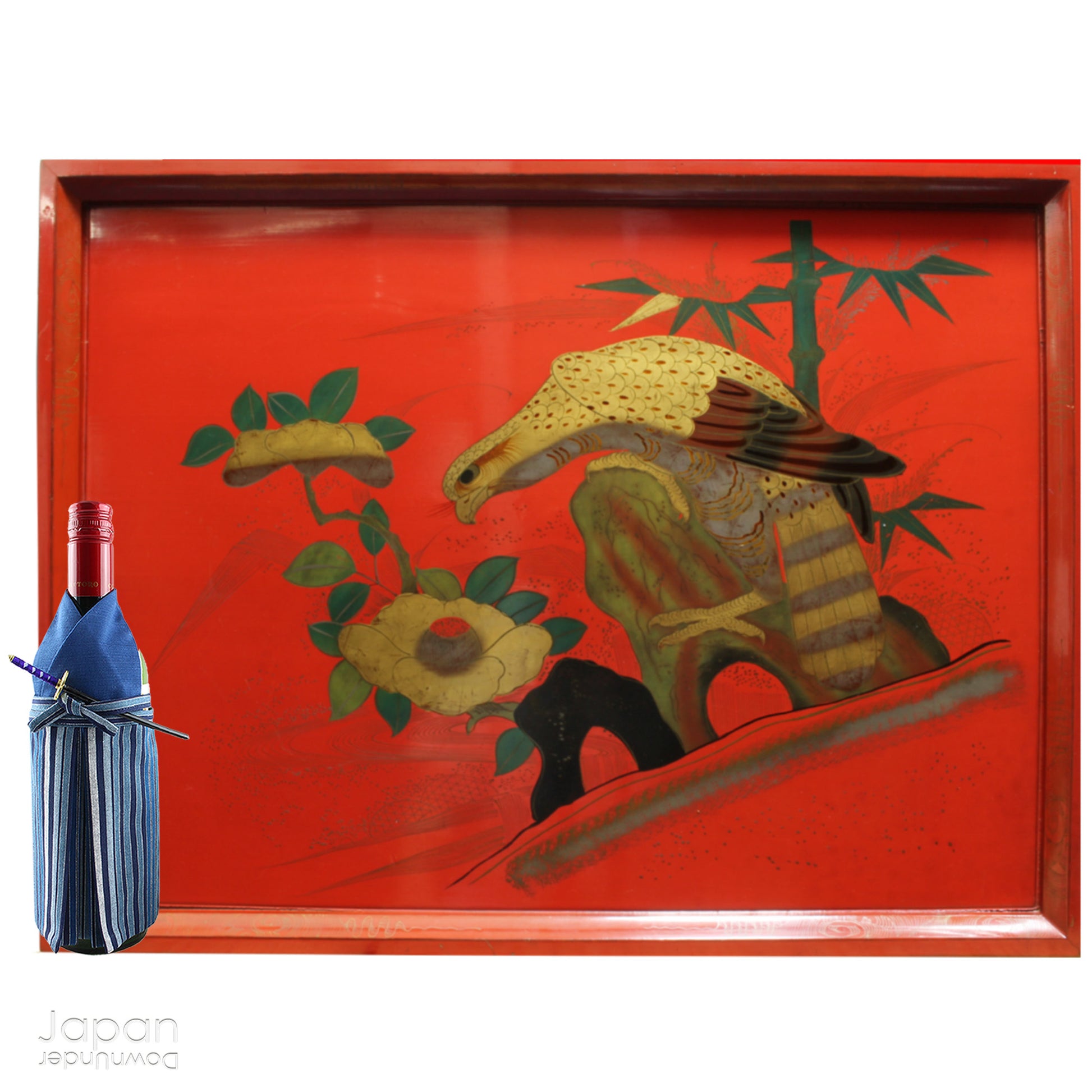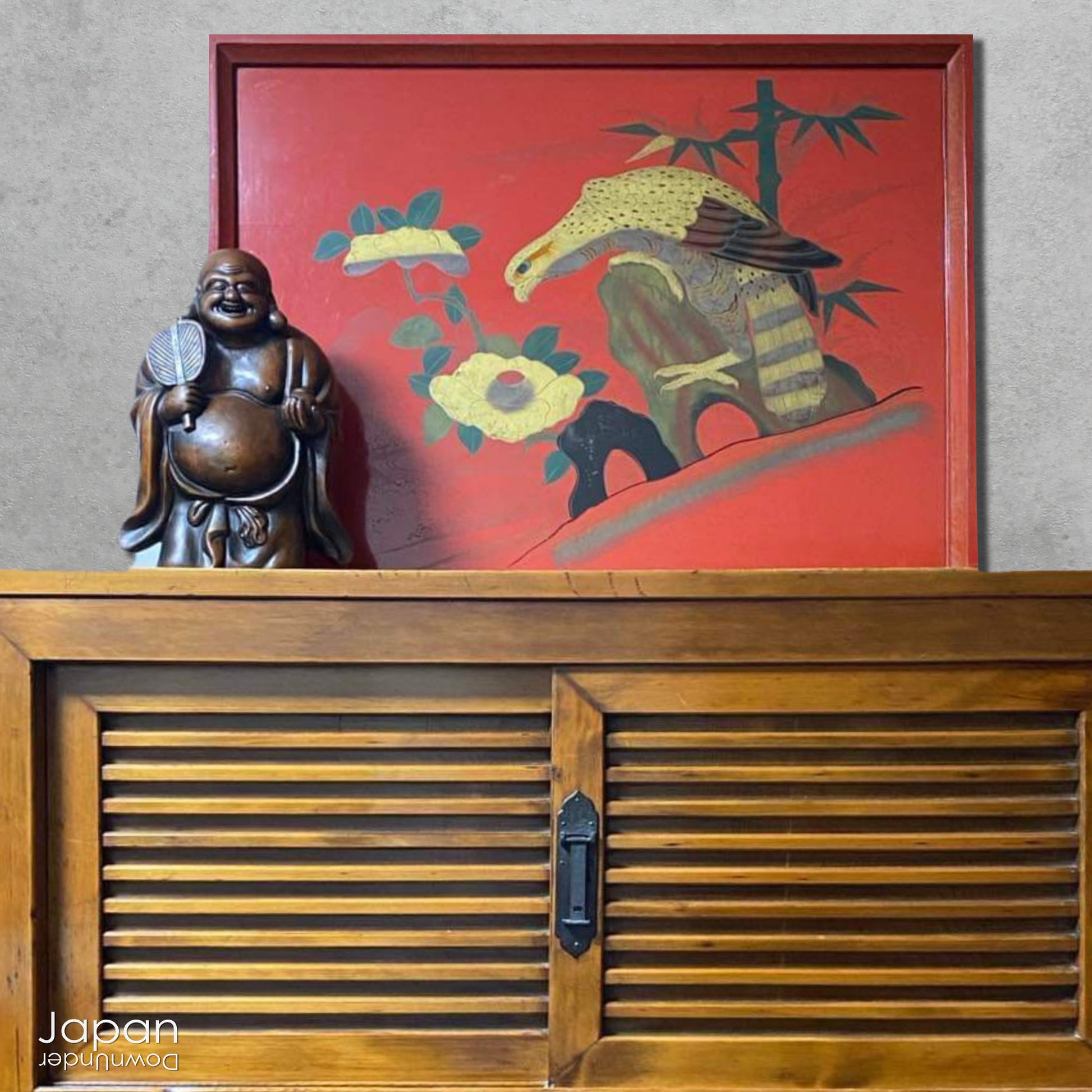JapanDownUnder
rare 1800’s red lacquer tray with lucky images - antique decor piece
rare 1800’s red lacquer tray with lucky images - antique decor piece
Couldn't load pickup availability
Love Japanese Style Like We Do
This exquisite 1800s rare red lacquer tray is a captivating piece that transports you back in time. Featuring a majestic hawk surrounded by lush peonies and bamboo, it’s not just a tray - it's a stunning work of art that brings history, culture, and elegance into your space. A true treasure for collectors and those who appreciate antique beauty, this tray offers both charm and significance.
This exceptionally large tray, known as a Hirobon, was traditionally placed in the tokonoma, a special alcove in the tatami rooms of affluent homes. These alcoves were a space for showcasing hospitality, beauty, and artistry. The tokonoma was a place where high-quality ornaments, seasonal foods, and flowers were displayed, offering a serene, contemplative atmosphere for guests to admire the changing rhythms of nature.
Hand crafted Wajima lacquerware, the tray is a wonderful shade of Japanese red, or shu, the same beautiful color found in Japanese ink for seals and the torii gates at Shinto shrines. The intricate artwork depicts a hawk perched on a rock, surrounded by vibrant peonies and bamboo - each element rich in symbolism.
For the samurai, the hawk represented strength, power, and the element of surprise. During the Edo period, hawks became popular motifs in art, symbolizing fortune, wealth, and a promising future. Peonies, revered as the "King of Flowers," stand for good luck, honor, and bravery. Bamboo, with its strong roots and resilience, symbolizes prosperity and endurance.
The tray’s elegant curved legs give it a pleasing height and though some wear is evident with minor scratches, darker marks, and slight movement at the joints, it only enhances its vintage charm and authenticity and does not distract from its timeless elegance or functionality.
Whether used as a stunning display stand, an art piece, or a backdrop for your favorite ornamental objects or flowers, this tray is a remarkable addition to any space. It's a one-of-a-kind item that you won’t find anywhere else!
A true gem for collectors and lovers of antique treasures.
- hawk tray measures 69 cm (27.2”) wide x 52 cm (20.5”) deep x 15 cm (6”) tall.
- weighs 2.000 gm.
(listing for hawk tray only)
SHIPPING INFORMATION
- please read our shipping notes in our shipping policy.
- we use recycle packaging and wrap for safety, rather than appearance.
ABOUT OUR VINTAGE, ANTIQUE AND OTHER ITEMS
We list pieces we feel are worthy of display. There may be scratches, dents, fading and signs of wear and tear. We try to explain the condition of each item exactly, but may miss something.
Information regarding the item and it’s age is obtained from dealers and our personal research. We do our best to give you the correct information but please be aware that we cannot guarantee this information.
Please message us prior to purchase with any questions you may have about our products.
WAJIMA LACQUER
Wajima lacquerware (called Wajima nuri in Japanese) is made in the city of Wajima, Ishikawa prefecture. The most notable features of Wajima lacquerware are not only it’s beautiful finish but also the high quality powder used for its production called jinoko (powdered diatomaceous soil), which can be found only in Wajima. Because of the use of jinoko as an undercoat, the lacquerware's high durability is ensured. Wajima-nuri lacquerware’s durability is also enhanced thanks to a painstaking process involving over 70 coats of lacquer.
Wajima lacquerware has a long history; in the Muromachi period (1336~1573), a monk from Negoro Temple in Kishu (present-day Wakayama Prefecture) introduced the lacquering technique to this area. The chinkin technique originated in the Kyoho period (1716~1736), and the maki-e technique was brought from Kanazawa and Kyoto during the late Edo period and early Meiji period. These and other traditional techniques have been handed down in Wajima.
Wajima lacquer was designated a traditional craft in 1975 by the government of Japan.
TOKONOMA
The tokonoma is an alcove in a traditional Japanese room where guests are received. It is the interior focal point of the room and was created to make guests feel welcome.
The tokonoma began in the Muromachi period (1336-1573). At that time the tokonoma was regarded as an altar to house Buddhist prayer objects.
When the ikebana and tea ceremony culture started developing the tokonoma became an area to express the feeling of the seasons. It created a calm space for guests to relax and meditate.
At first the tokonoma was seen only in the homes of the rich and elite samurai. It was a place to display only very expensive artwork and to show off to guests!
In the Meiji period ( 1868-1912) commoners began to build a tokonoma in their homes. Beautiful artwork became more affordable so they too, could enjoy making seasonal displays in their homes.
Today the tokonoma is still a sacred place in the home and sets the emotional tone of the household. It is a place to appreciate emptiness, stay still and meditate.
Share
